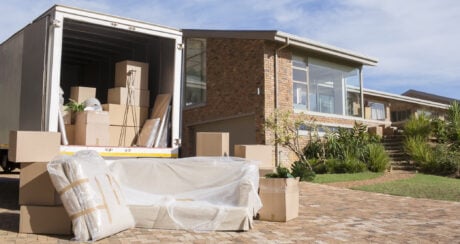Like many real estate markets in the world right now, the 2023 Australian housing market is a volatile and expensive environment. Here are what prospective home buyers should know as they consider whether this is the year to take the plunge.
1. The state of the market
The residential property market is inextricably linked to the health of the economy and Australia is facing challenges such as inflation and exploding interest rates, which are having a big flow-on effect for the residential property market.
Australia’s residential market can fluctuate wildly between states depending on a range of factors including overall liveability and expense. The market in general experienced massive growth post-Covid, rising 23.7% in 2021[1], the strongest annual growth since the Residential Property Price Index series began in the September quarter of 2003, according to the Bureau of Statistics.
However, multiple consecutive interest rate rises[2] have cast a pall over the market as demand lessens due to increasing repayments.
As a consequence, lower volumes of property came on the market in 2022 and this, coupled with the rise in the cost of living and lower consumer confidence has caused a downturn that shows no signs of ending anytime soon.
At the same time, the Reserve Bank (RBA) has made it clear that it intends to keep using interest rate rises as a weapon against inflation. This has continued to create uncertainty as we move into 2023, creating what could only be described as a buyer’s market.
2. Historical downturns
The expression ‘as safe as houses’ could easily be used to refer to Australia’s residential property market over a very long period, with its remarkable consistency and returns for investors. In the 30 years between 1985 and 2015, for example, the market rose an average of more than 7% a year, according to data from the Reserve Bank of Australia[3].
All markets are cyclical, however, and while some in the residential property sector may be describing the current market as a downturn, some areas are still doing better than others. Some suburbs in Sydney and Melbourne fell by 20%[4] while other areas made small gains.
Overall, Australia’s residential property market fell 3.2% over the year to November, according to data from CoreLogic[5], which it should be noted is paltry compared with the gains made the year before, though Sydney and Melbourne were hit harder than other areas. Sydney prices for all dwellings, including houses and apartments, fell by 12.1% last year, while the Melbourne residential property market was down by 8.1%.
Market downturns occur when large numbers of owners are forced to sell because they can no longer make their mortgage repayments and there are no buyers on the other side. There may be some signs of this already creeping into the property sector.
An article in the Australian Financial Review on February 4 stated that there were an unusually high number of properties that remained unsold after six months. So with buyers holding off and interest rates on the march, the market will continue to fall and by just how much is anyone’s guess.
With regards to a housing market crash, however, it should be noted that the Australian residential property market only fell 6.4% in 2008[6] following the GFC, so it remains one of the safest investment categories in the world.
3. Interest rates
On November 7, the RBA increased interest rates by 25 basis points to 4.35%, making it the ninth rise since May last year, and this is having a big impact on the state of the housing market as would-be sellers hold off and many existing mortgage holders struggle to make repayments. As of mid-February, the number of new listings is tracking at 22% lower than the five-year average, according to data from property market analyst CoreLogic.
Additionally, the RBA found in its October 2022 Financial Stability Review that about 35% of all housing debt was on a fixed-rate term, and more than 60% of these low, fixed-rate loans will revert back to standard variable by 2023, meaning these homeowners will move to new variable rates possibly well above the 6% homeowners are paying now, which will place considerable strain on those mortgagees’ finances.
The majority of these homeowners will be okay but some may be forced to sell, meaning supply may easily outstrip demand, putting further downward pressure on prices. Additionally, the number of homeowners missing mortgage payments has risen to an alarming one in eight, and of those nearly half had missed multiple payments due to rate rises[7].
This is also having a huge flow-on effect on the economy as a whole, as everything else goes up in price.
Additionally, in January 1990, when interest rates hit a record high of 17.5%[8], the median house price was somewhere between $80k-$100k, while it’s now closer to $600K, meaning there’s a lot more at stake from a potential loss perspective, even allowing for inflation.
So what does this mean for the first-home buyer? As rates rise home prices fall, which should be a good thing, but you need to be wary of how much you can afford to repay and how more interest rate rises will allow you to do this while inflation simultaneously drives up the cost of everything.
4. Inflation
Inflation and interest rates are inextricably linked and governments set monetary policy to target inflation, which in basic terms occurs when there are not enough goods and services in an economy to justify the amount of money in circulation. This forces prices up in what seems like an endless cycle, which in turn has a big effect on housing demand. Why? Because budgets are tighter, people are saving less and demand is lower.
Figures from the Australian Bureau of Statistics (ABS) revealed that the consumer price index, which measures the inflation rate, rose by 8.4% in the 12 months to December 2022.
To see what impact this is having, look at property values nationally. House prices in Sydney are down by 13.8% year-on-year and nationally by 7.2%. In late 2022, PropTrack’s biannual Property Market Value Report said Sydney, Brisbane and Canberra home values could fall by between 8% to 11% in 2023, thanks to a combination of inflation, interest rate hikes and cost-of-living pressures.
5. The rental market
Inflation is pushing the price of everything up and rents, unfortunately, are no exception.
Rental prices have been steadily rising nationwide, not just because of inflation but also due to an increase in demand fuelled by overseas workers and students returning post-COVID. In fact, in March 2023 there were fewer than 40,000 residential rental properties available nationwide, a tiny amount for a country of Australia’s size[9].
Vacancy rates nationally averaged just 1.2% across all capital cities, according to data from CoreLogic, which has left a lot of people concerned about their ability to find affordable housing. This, coupled with ongoing apartment supply issues will continue to push rental rates higher, exacerbating what is already being described as a crisis.
Higher rents will continue to make it harder for aspiring first homeowners to save a deposit and the news cycle is full of horror stories of the grim reality facing renters in high-demand areas, with some dealing with rises of over 30%[10]. In Sydney, rents have risen by 11% in just a year, leading many to call for caps on rent increases nationwide.
6. The state of the economy
This year has not started well for the Australian economy, and as of mid-February there are plenty of indicators that inflation, high interest rates and the strains these are putting on the cost of living have created somewhat of a perfect storm.
While the economy is not technically in a recession, there are lots of worrying statistics out there, such as the ABS report that retail sales for December 2022 fell 3.9%.
If the economy continues to spiral downward, the Reserve Bank may contemplate applying the handbrake to interest rates, but there is little indication that they are willing to do so until inflation is brought under control.
How is this likely to affect the housing market? Like all markets, there will always be highs and lows, as the historical data above shows, but just how far this market could fall is anyone’s guess. Retail property prices are down across the board, while the risk of a recession increases daily.
In Sydney, property prices have already fallen 13.8%, which fits into the ‘technical correction’ category, and that’s without the additional rate rises most experts are predicting.
This is, of course, coming off the back of a prolonged period of property price rises and generally favourable economic conditions, though things will probably continue to get worse before they start to get better.
Article Sources
-
Australian Bureau of Statistics, “Strongest annual growth in property prices on record,” accessed March 29, 2024.
-
Rafqa Touma, The Guardian, “Australia’s looming mortgage stress crisis: what the nine interest rate rises mean for households,” accessed March 29, 2024.
-
Marion Kohler and Michelle van der Merwe, “Long-run Trends in Housing Price Growth,” accessed March 29, 2024.
-
Dinah Lewis Boucher, “What Australia's housing market has been doing over the past year,” accessed March 29, 2024.
-
Tim Lawless, “CoreLogic Home Value Index rate of decline eases despite -1.0% fall in January,” accessed March 29, 2024.
-
SBS News, “Australia has seen the biggest annual fall in home prices since the GFC. What's driving it?,” accessed March 29, 2024.
-
Eliza Bavin, “430,000 mortgage holders admit to missing a payment: ‘Things could get worse’,” accessed March 29, 2024.
-
Daniel Paproth, “When interest rates were 17.5%: 'No light at the end of the tunnel',” accessed March 29, 2024.
-
SQM Research, “RESIDENTIAL VACANCY RATES,” accessed March 29, 2024.
-
Mostafa Rachwani, “ This article is more than 2 months old Sydney renter hit by 35% hike as housing crisis sparks calls to cap increases,” accessed March 29, 2024.
DIVE EVEN DEEPER

How To Buy A House In Australia: 12 Steps To Purchasing Property
The main steps to buying a house or property in Australia include getting your finances in order, seeing how much you can borrow, and choosing the right mortgage lender.

First Home Buyer Tips: 5 Mistakes To Avoid
Enlisting early help from a lending professional, doing neighbourhood-level research, and factoring ongoing costs into your budget are some key tips for first-time home buyers to consider.

Costs To Know When Buying a House
Costs to consider when buying a house include stamp duty, mortgage registration fees, and conveyancing costs.

First Home Buyer Schemes and Grants in Australia
Australia’s first home buyer schemes and grants can help get your foot on the property ladder. Learn more about the programs available in your area.

